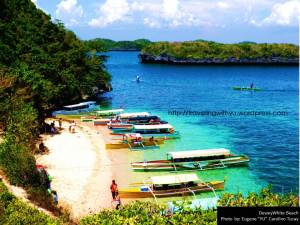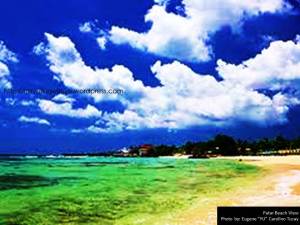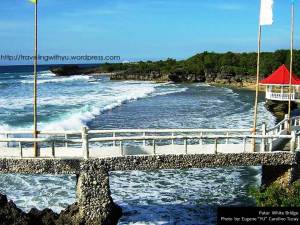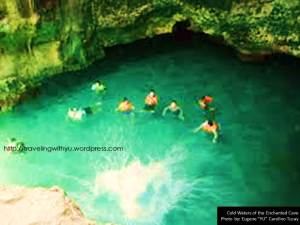Never would you miss out a fun in an island where you will
not seek for the sun, sand, beach, and a little of those fun and memorable
activities. Anawangin Cove, San Antonio, Zambales is one of the place where you
can bask yourself under the sun, enjoy the beach, and the rigorous activities you
can do such as climbing, snorkeling, and enjoying its nature's beauty.
As early as 7 we are all up and started our breakfast. Some
ran along the Anawangin beach and some enjoyed sunrise watching. It was a
different experience as we turned down our tents and waved goodbye to Anawangin
Cove as our sail sets for Capones Grande Island or also known as Faro de Punta Capones. While our pump boat pushes its way
against the waves, we have short discussions about the trees that grow along
the Anawangin beach which was thought off as pine trees. NO! it’s not a pine
tree but another member of the Plantae kingdom, Pinophyta division, and
Pinopsida class called the Conifers or Agoho,
which adds mystery on the place.
 |
| View at the docking station where some adventurers were taking photos near the cliff. |
 |
| The docking station and the tip of the lighthouse at Faro de Punta Capones |
 |
| Rhei enjoying the boat ride to Capones Grande Island and a view of the Capones Lighthouse tip. |
 |
A shot from our boat seeing through clear waters of Capones Island the beautyof corals laying magnificently and greeting us as our boats near docking.
|
 |
| The docking area at Faro de Punta Capones. |
We docked at Capones Grande Island, went down our pump boat
and get wet before we can really step on the islands dry area to climb the
island and atop the historic lighthouse which guides international vessels to
Subic Bay coming from the north to northwest to Manila Bay. It’s height is 65.0
ft. with a range of 25 nautical mile (46 km) which was constructed by brick
masonry and was first lit in August 1, 1890.
We went up at the lighthouse feeling the creeps and
excitement, for some will be fear due to its height. Upon reaching the top, you
will see a magnificent view of the whole island.
 |
| Uphill climb at Faro de Punta Capones. |
 |
| A bottom view of the Faro de Punta Capones from first ten steps of the docking station. |
 |
| La Entrada - the entrance of the Capones Lighthouse with intricate bolted floral design. |
 |
| A view of the lighthouse from the entrance. |
 |
| Before we enter the lighthouse, I took another photo of it where you can see people at the viewing deck. |
 |
| A shattered window of the Capones Lighthouse. |
 |
| Kuya Mike and Rhei resting along the intricate staircase of the tower, using the window sleeves as their chairs. |
 |
| A view of the unattached staircase with intricate details in a whole from floor next to the Capones Lighthouse's lamp. |
 |
| Wholes around the Capones Lighthouse like those of the submarines and marine vessels giving a magnificent telescopic view of the island. |
 |
| Top view of the Capones Lighthouse Garrison which was wrecked by previous typhoons. |
 |
| Marz enjoying a meadow photo shoot with her rasta sarong blown by Capones Island breeze. |
After enjoying the view we were asked to go down and this
ends our Zambales tour. Sad as we will be back on our regular working lives, we
are still happy as we have experienced yet another view of the Philippines and
shove this off to our memory banks and treasure chests. In addition, earning new friends is added atop
the list for this trip.
This is just the start of my summer and will share more in the next post!
Happy reading... for any suggestion or comment just write them up. Ask me question and will answer them as soon as I can.
Please like my Facebook page at www.facebook.com/travelingwithyu and to follow and get updates from my post, you can subscribe on my blogsite by clicking the subscribe button.
Thanks!
-Yu






















